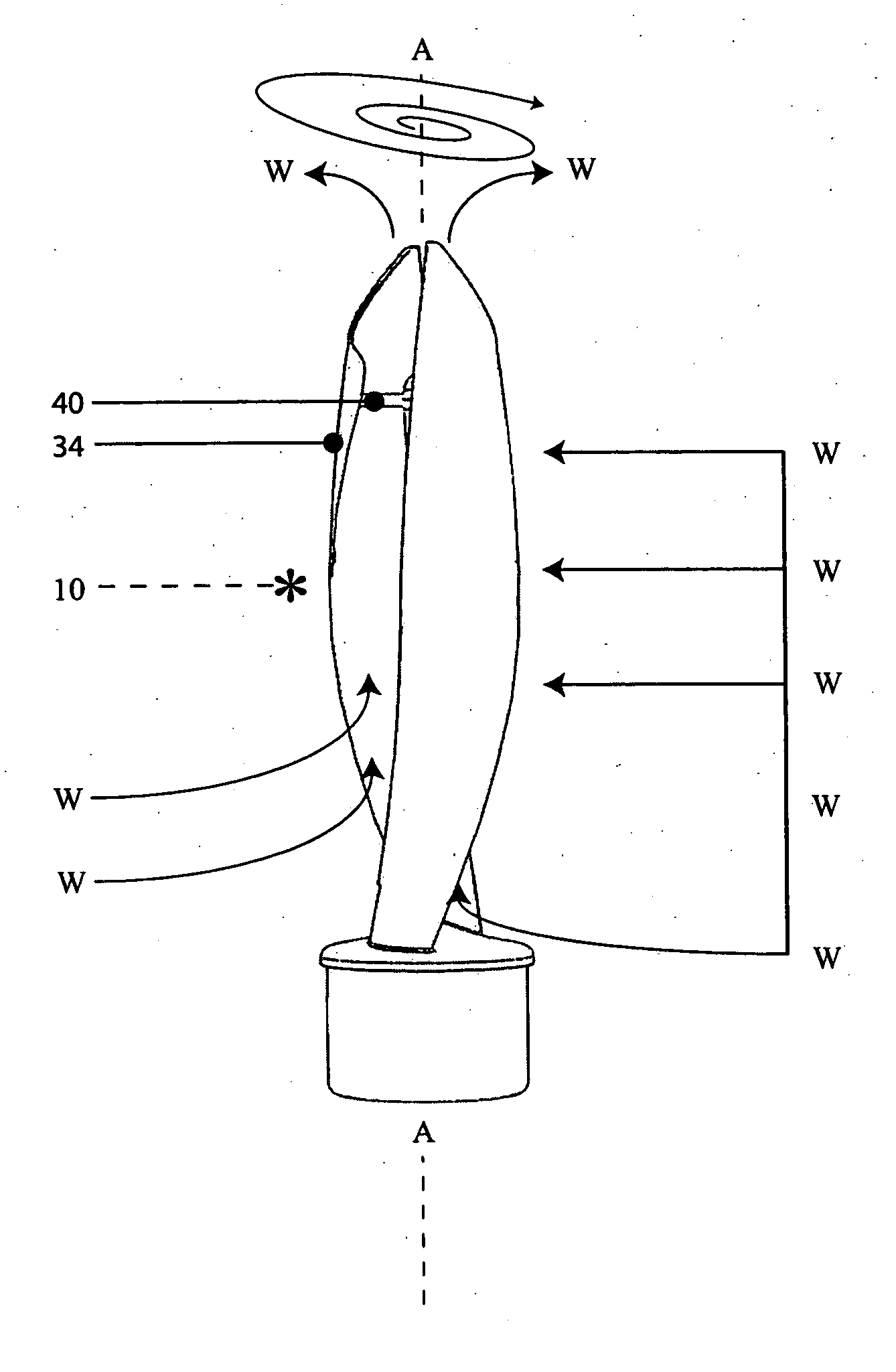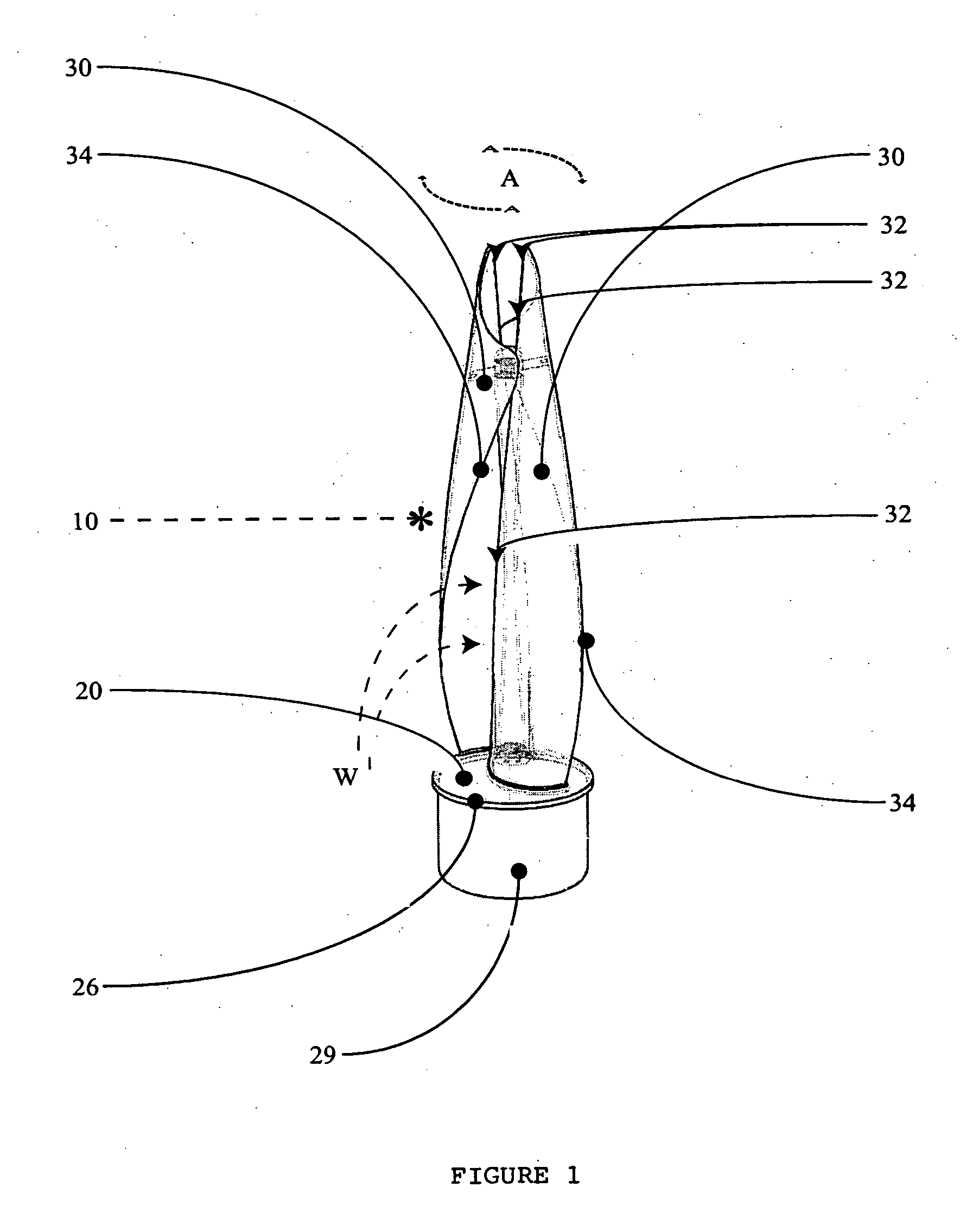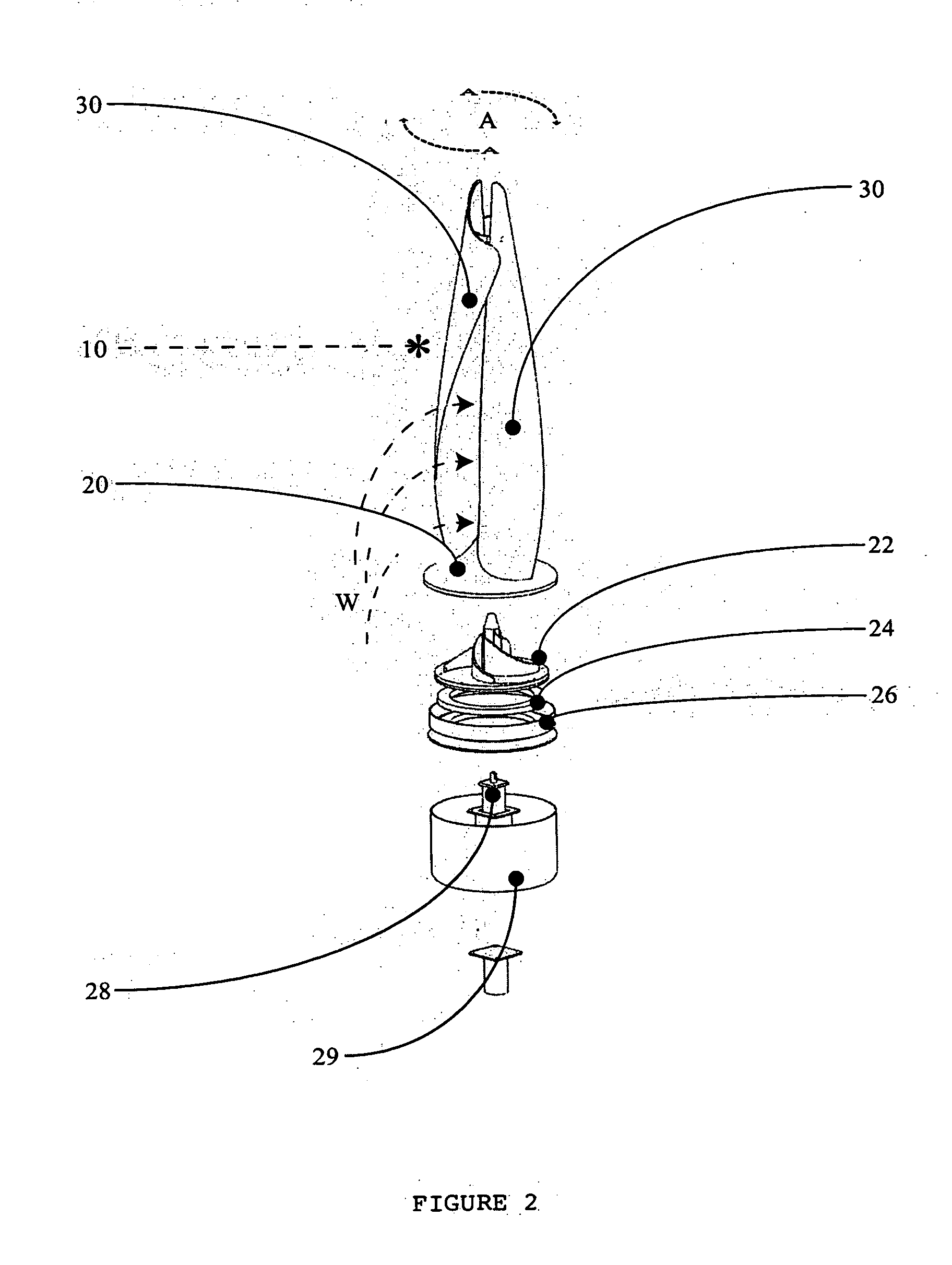Helical taper induced vortical flow turbine
- Summary
- Abstract
- Description
- Claims
- Application Information
AI Technical Summary
Benefits of technology
Problems solved by technology
Method used
Image
Examples
Example
DETAILED DESCRIPTION OF THE DRAWINGS
[0073] The present invention provides a novel turbine generator system 10. As seen in FIG. 1, turbine generator system 10 includes a rotatable base 20, and a plurality of rotor vanes 30 extending from rotatable base 20. Each of rotor vanes 30 has a helical tapered inner surface 32 and a helical tapered outer surface 34. The top ends of rotor vanes 30 may optionally be attached together by a member 40 (positioned at the top of a mast 35).
[0074]FIG. 2 is an exploded view of one embodiment of the invention showing additional components disposed under base 20. Specifically, a weighted flywheel base 22, an optional plurality of magnetic repulsion rotor / base support surfaces 24, cover extension 26, geared electric generator motor 28 and cover 29 are shown.
[0075] The operation of turbine generator system 10 can be understood by viewing the remaining FIGS. 3 to 11 together, as follows.
[0076] FIGS. 3 to 5 illustrate the turbine generator system 10 rota...
PUM
 Login to View More
Login to View More Abstract
Description
Claims
Application Information
 Login to View More
Login to View More - R&D
- Intellectual Property
- Life Sciences
- Materials
- Tech Scout
- Unparalleled Data Quality
- Higher Quality Content
- 60% Fewer Hallucinations
Browse by: Latest US Patents, China's latest patents, Technical Efficacy Thesaurus, Application Domain, Technology Topic, Popular Technical Reports.
© 2025 PatSnap. All rights reserved.Legal|Privacy policy|Modern Slavery Act Transparency Statement|Sitemap|About US| Contact US: help@patsnap.com



